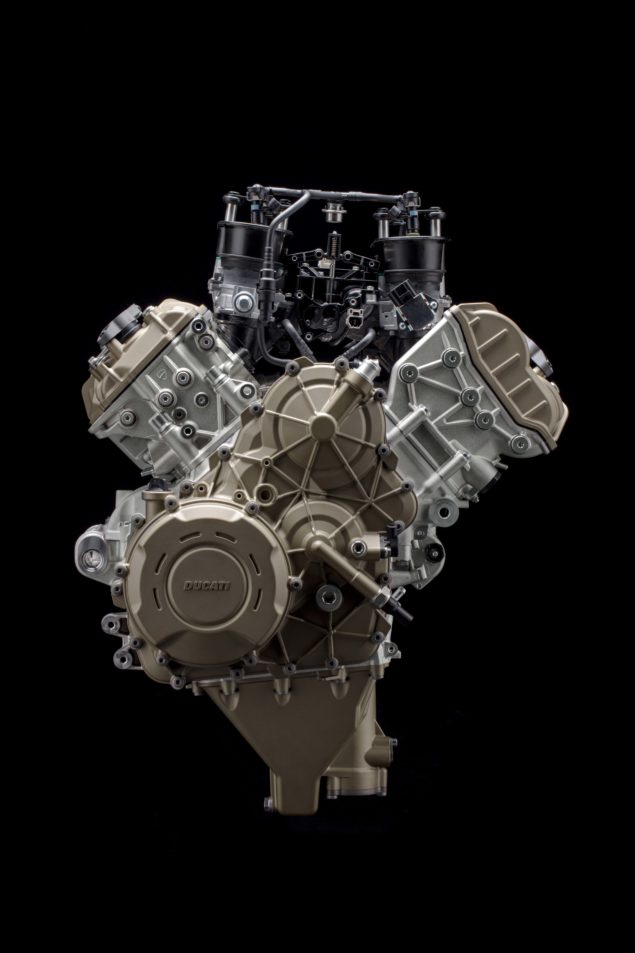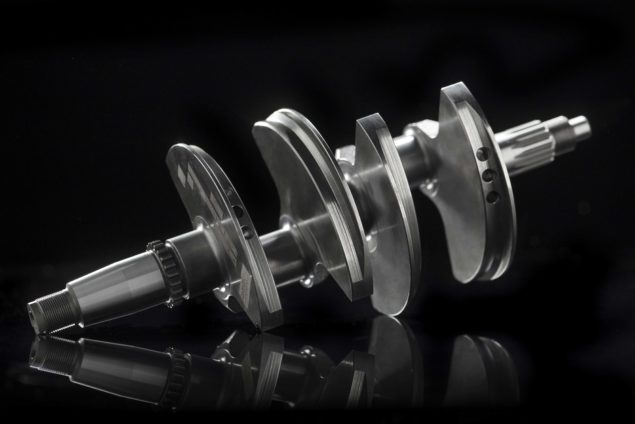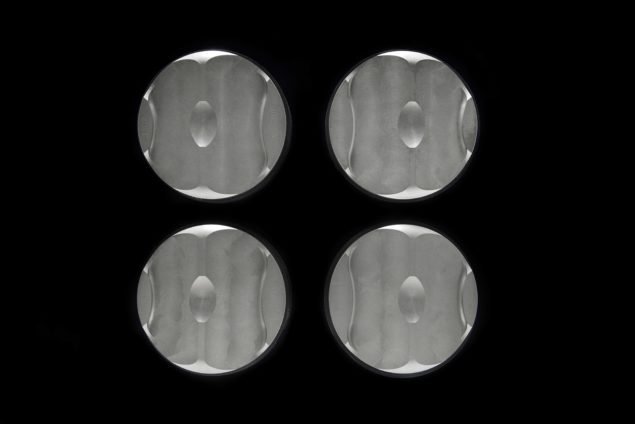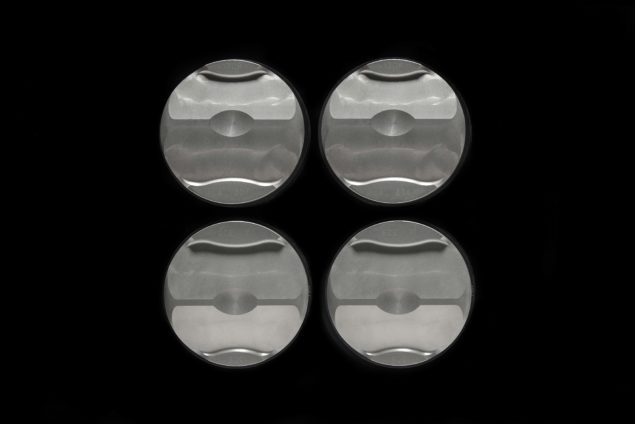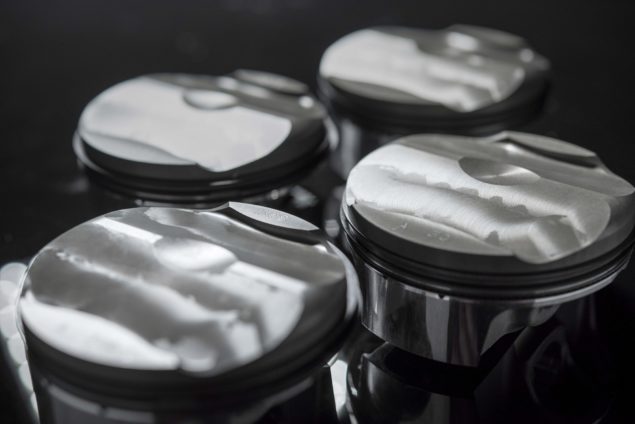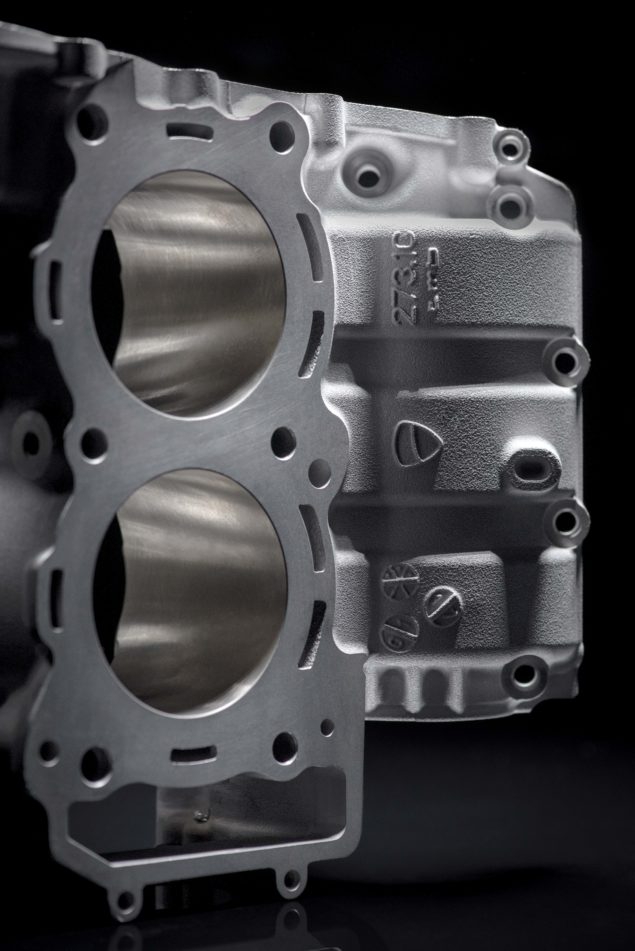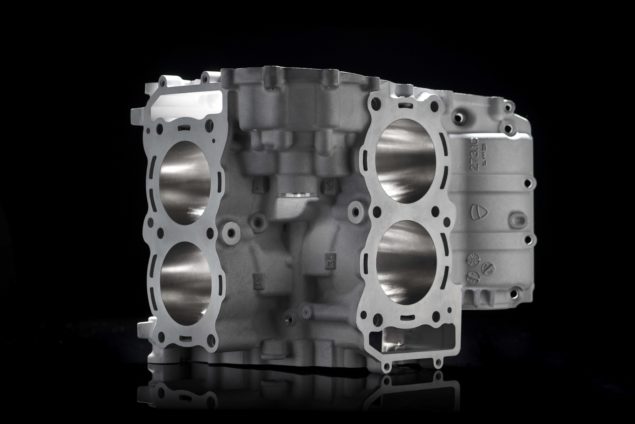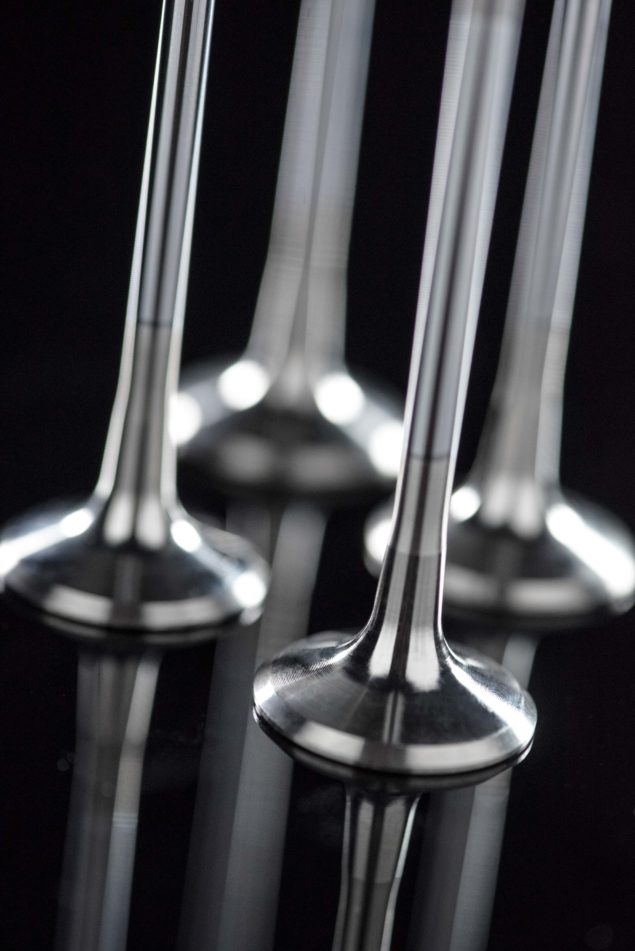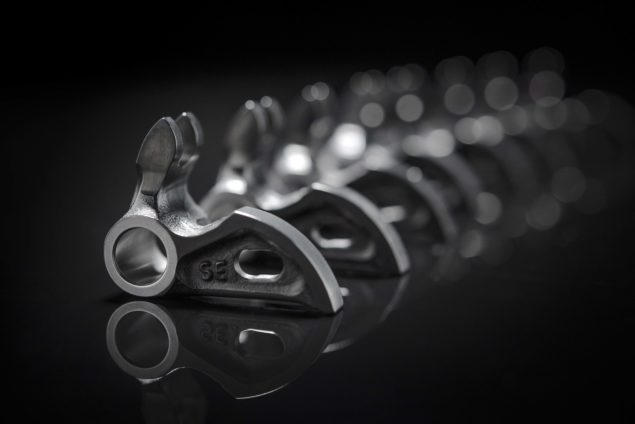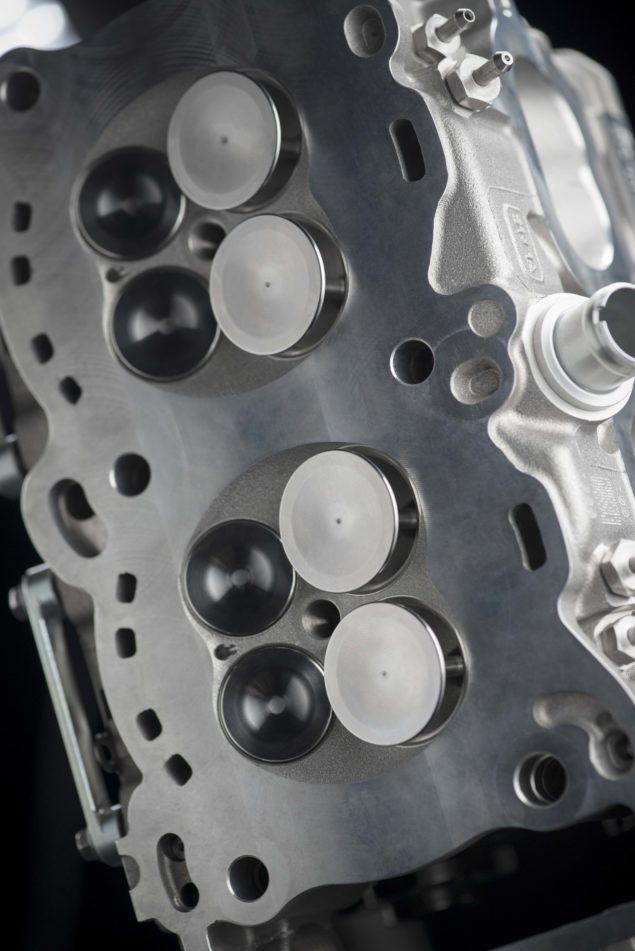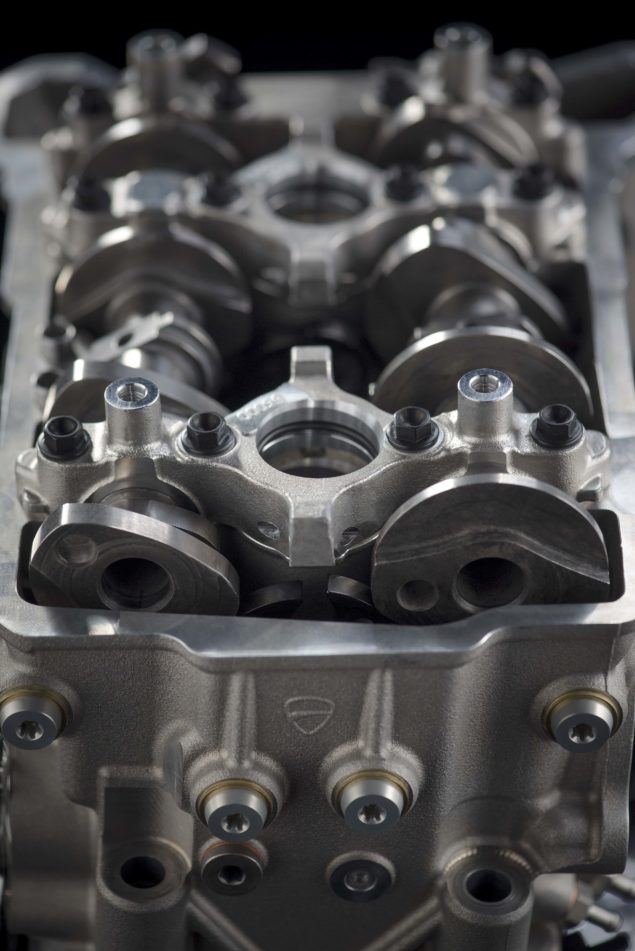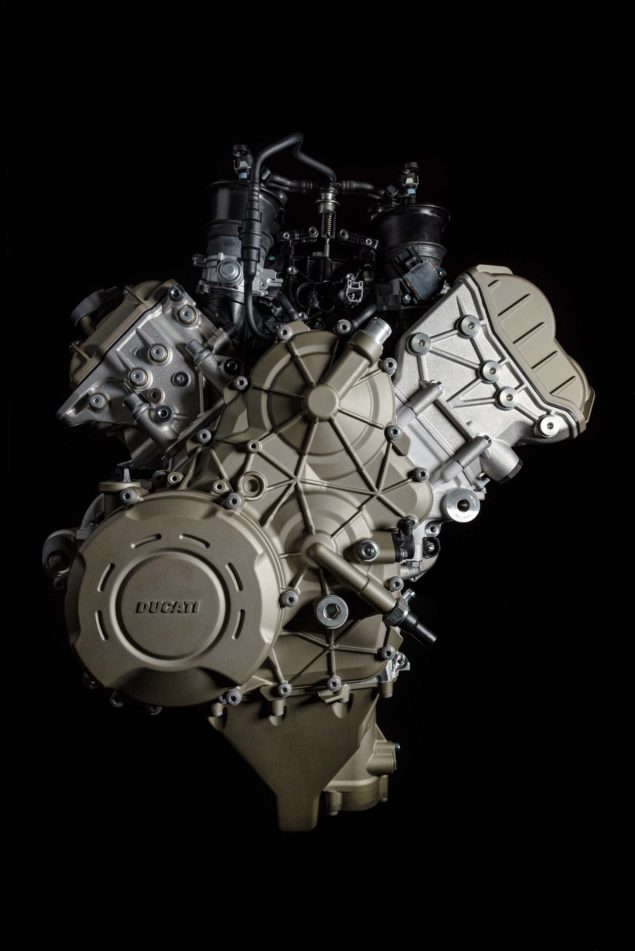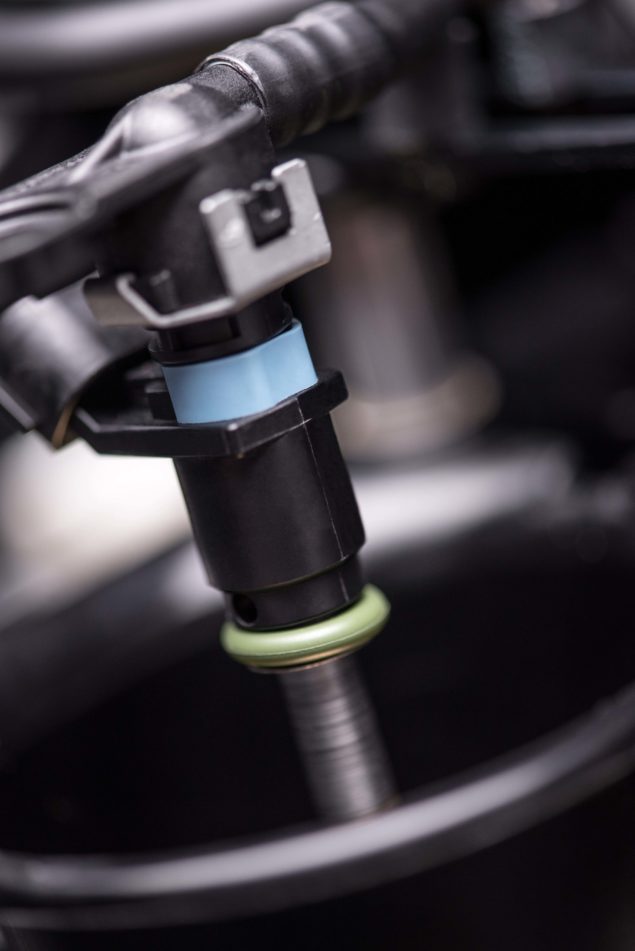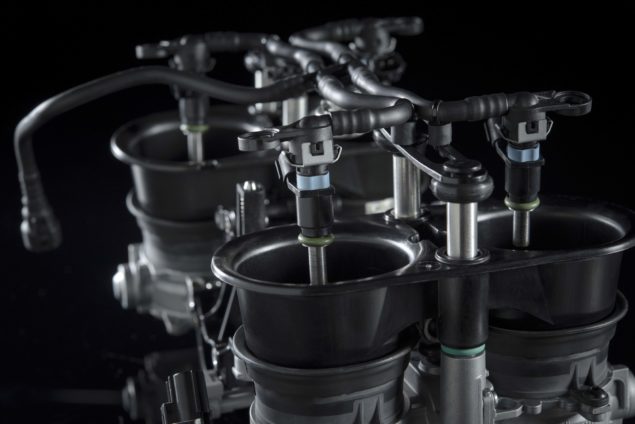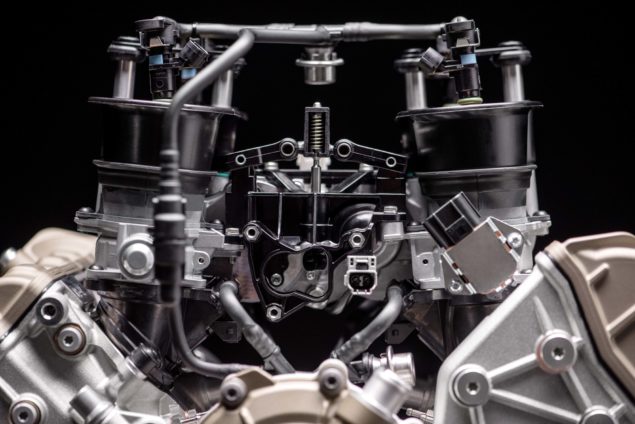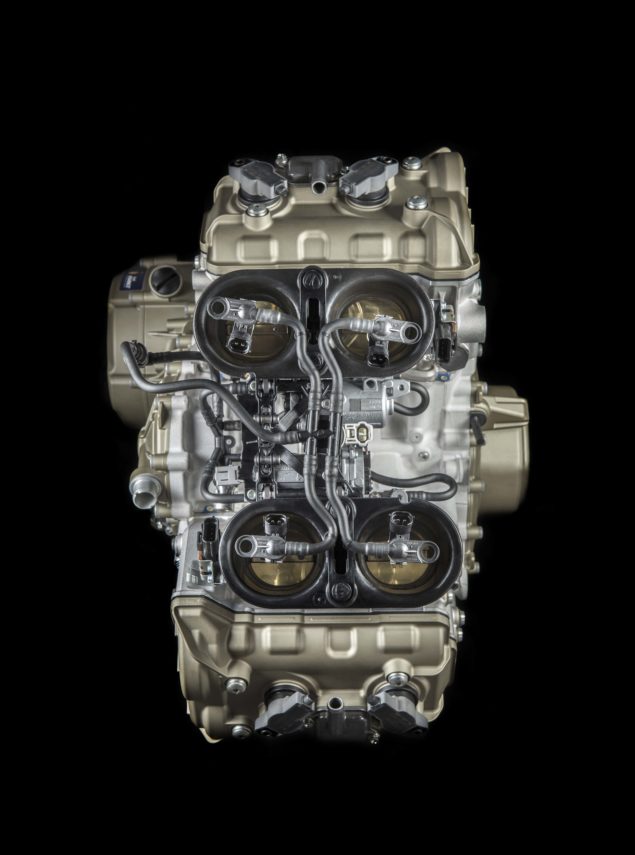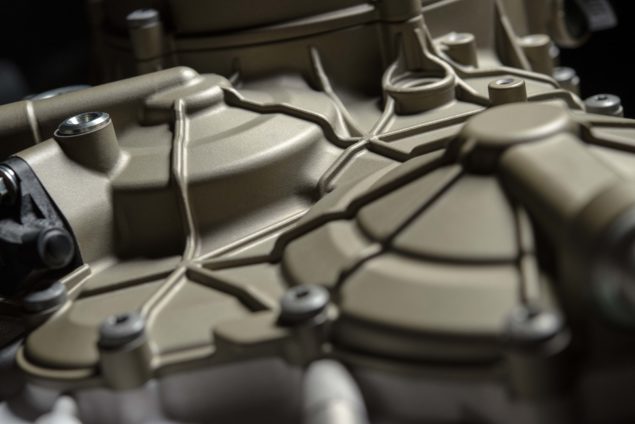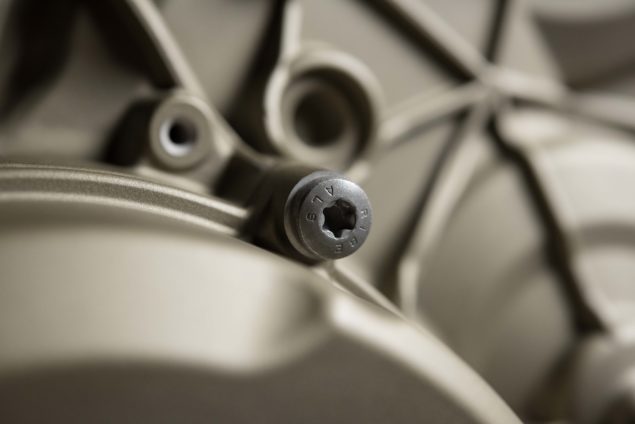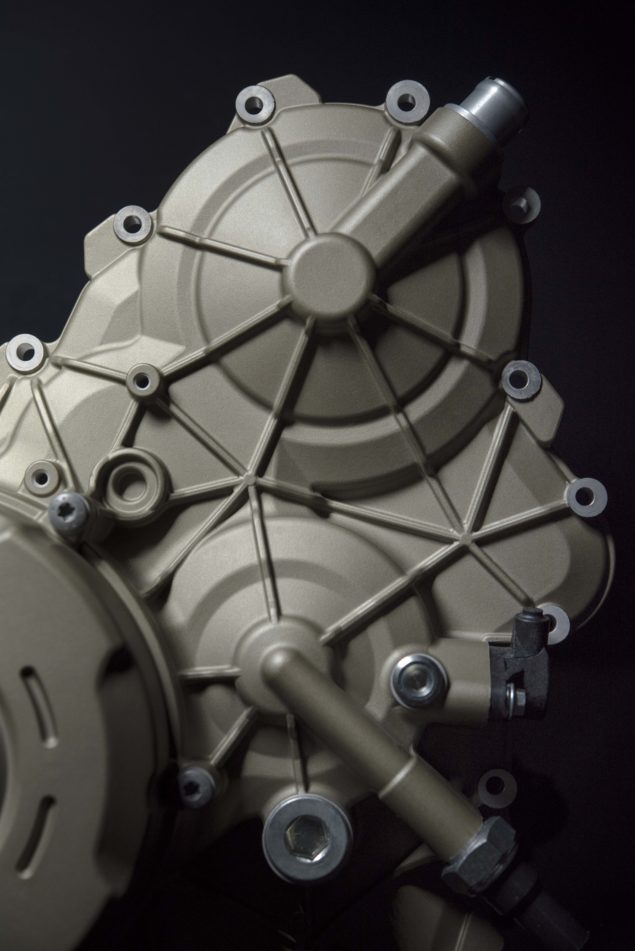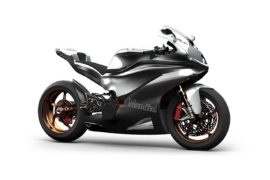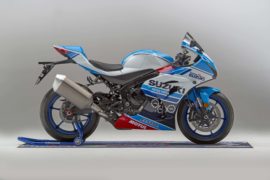Hello and welcome to a new era of Ducati motorcycles, which is starting with a very special engine. Named the Desmosedici Stradale, this road-going version of the company’s MotoGP power plant is what is going to power Ducati’s next superbike, the Ducati Panigale V4.
Debuting today in Misano, at a special event ahead of the San Marino GP, the mystery around the Desmosedici Stradale engine has finally be revealed, to the tune of 210hp (@ 13,000 rpm) and 88.5 lbs•ft of torque (@ 12,250 rpm).
Dropping details on the 90° V4 engine with desmodromic valves, we now know that Ducati will continue to play the displacement game with its superbike, as the street version of the Panigale V4 coming with a 1,103cc displacement.
In 2019 however, Ducati will release its “R” spec machine, which will have a 1,000cc displacement, in order to homologation compliant for the World Superbike Championship and other national series.
Ducati CEO Claudio Domenicali says the differing engine sizes is to aid mid-range torque for the street version of the new superbike, as both the street and race versions of the Panigale V4 will come with an 81mm bore, just like Ducati’s MotoGP machine.
To replicate the feel of a v-twin engine though, the Desmosedici Stradale engine will have a 70° crank pin offset and a “Twin Pulse” 0-90-290-380 firing order for its pistons, with each side of the V4 engine firing like two sets of v-twin motors.
This should produce good mechanical grip from the 210hp motor, while also adding to the motorcycle’s unique character and feel.
Aiding the chassis dynamics as well will be the counter-rotating crankshaft, which will help mitigate rear-wheel lift during braking, and also aid anti-squat during hard acceleration. As expected, this requires the addition of a jackshaft to the engine design, which does rob some power to the rear wheel.
Readily obvious from the photos below is that the 90° engine has been rocked back by 42°, just like on the MotoGP race bike.
The engine also features variable length intake tubes (52mm equivalent), as well as a redesigned desmodromic valvetrain that draws its design inspiration from Ducati’s MotoGP program.
Ducati has also confirmed that the engine cases on the Desmosedici Stradale engine will be integral to the chassis, with the rear subframe, swingarm, and headstock/airbox bolting directly to the engine, instead of a separate chassis.
The Desmosedici Stradale engine itself weighs 143 lbs, just 4.8 lbs more than the outgoing 1,285cc Superquadro v-twin engine. Aiding this is the fact that the engine casings are made from die-cast aluminum, while the cylinder sleeves are Nikasil-coated aluminum and the engine covers are die-cast magnesium.
Despite its racing pedigree, the Desmosedici Stradale engine maintains a 15,000-mile service interval, despite being one of most powerful superbike engines ever from the Italian brand.
Source: Ducati


